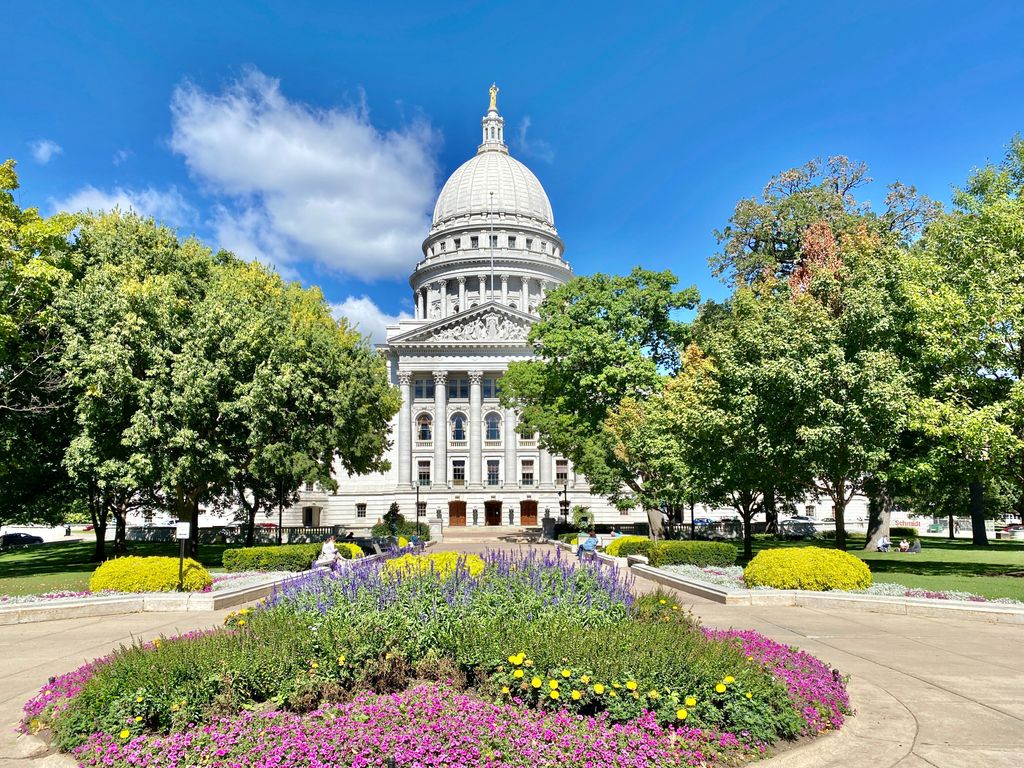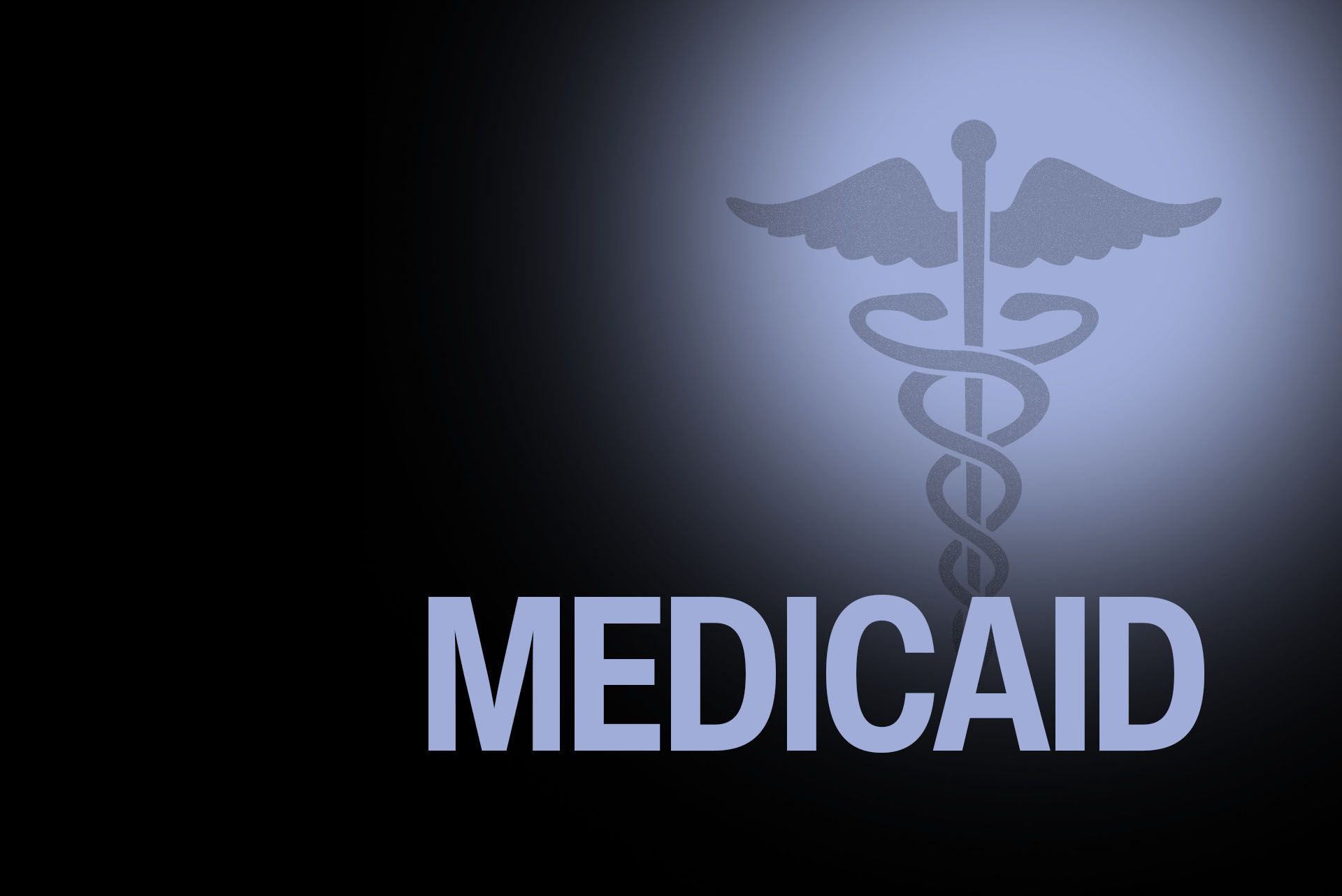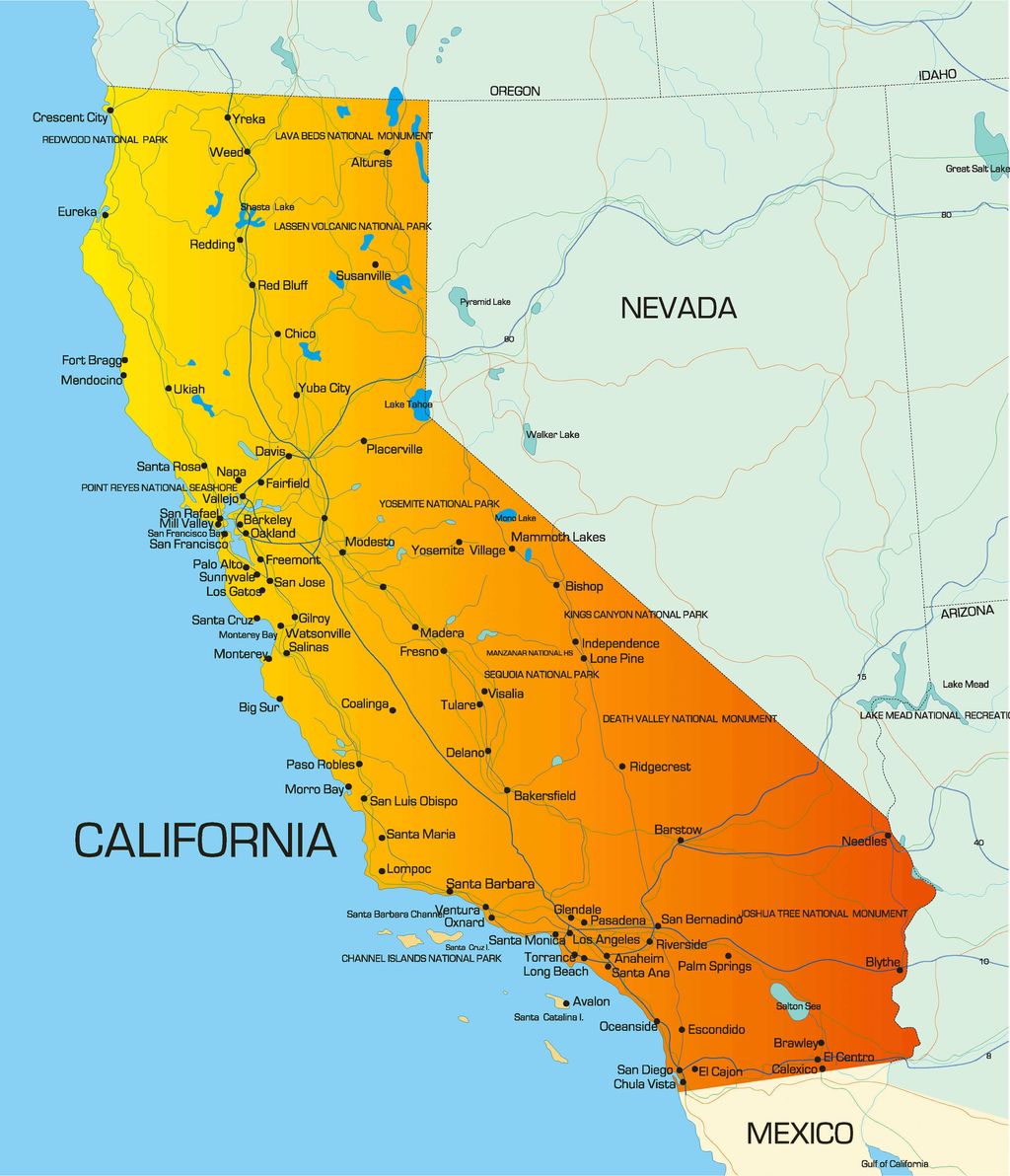
Across the United States, states are grappling with an unfolding fiscal landscape shaped by profound shifts in federal domestic policy. The recent enactment of the “One Big Beautiful Bill” by President Donald Trump has initiated a significant recalibration of federal funding mechanisms, particularly impacting crucial public programs such as Medicaid and the Supplemental Nutrition Assistance Program (SNAP). This legislative pivot has brought an unprecedented level of financial uncertainty to state governments, compelling governors and legislative bodies to undertake difficult assessments and strategize for what many anticipate will be substantial reductions in essential services.
At the heart of this fiscal realignment are deep federal funding cuts, projected to reduce Medicaid funding by $863 billion and SNAP funding by $295 billion over the next decade. These figures, emanating from the House bill, represent a dramatic departure from previous federal commitments, placing immense pressure on states that rely heavily on these federal dollars to support their most vulnerable populations. The implications extend far beyond mere budgetary adjustments, threatening a wide array of social safety nets and economic stability across the nation.
A recent report from the Commonwealth Fund and the George Washington University Milken Institute School of Public Health offers a sobering early look at these potential economic consequences. Their analysis projects that by 2029, these sweeping cuts could lead to the loss of 1.22 million jobs nationwide. Furthermore, states’ gross domestic products are anticipated to experience a collective drop of $154 billion within that same year, highlighting the broad economic ripples of such significant policy changes.
This study further illuminates a critical imbalance: states are projected to lose significantly more in jobs, economic activity, and tax revenue than the federal government would save. For instance, in 2029 alone, state economies are expected to forfeit $154 billion in GDP from the Medicaid and SNAP cuts, a sum 18 percent greater than the $131 billion in federal savings anticipated for that year. Additionally, states are projected to lose $12 billion in state and local tax revenue, underscoring the compounding fiscal challenges.

Leighton Ku, lead author and Director of the Center for Health Policy Research at the George Washington University Milken Institute School of Public Health, emphasized the broader role of these programs, stating, “Medicaid and SNAP aren’t just safety-net programs — they’re economic engines.” He warned that “Cuts of this magnitude would harm millions of families and destabilize state economies, triggering a devastating number of job losses and fiscal strains.” This perspective underscores that the impacts are not confined to benefit recipients but permeate the entire economic fabric of states.
Joseph R. Betancourt, President of the Commonwealth Fund, provided a poignant view from the medical profession, stating, “As a physician, I’ve seen firsthand how devastating it is when patients lose access to care and basic necessities like food.” He cautioned that “Slashing Medicaid on this scale will leave millions uninsured, increase suffering, and overwhelm providers who are already stretched too thin,” emphasizing the profound human cost. These cuts, he concluded, threaten not just health coverage but “people’s health and well-being.”
The broad impact of these proposed budget cuts on health coverage is stark. If the Republican budget cuts a third of federal Medicaid funding across the board, more than 25 million Americans could lose their health coverage. This translates to an estimated 3 million people in rural areas, including more than 10 million individuals who rely on Medicaid. Additionally, about 10 million children, representing 1 in 8 kids nationwide, could lose their coverage, as Medicaid currently insures nearly 40 percent of children nationwide.
Furthermore, the cuts pose a severe threat to the elderly and those requiring long-term care. Medicaid currently covers approximately 60 percent of nursing home residents in the United States. A one-third reduction in federal Medicaid funding for nursing homes could result in 1 in every 5 seniors losing their nursing home care, presenting an acute crisis for a particularly vulnerable demographic.
Read more about: The Unwritten Rules of the Sky: Why Pilots Are Our Heroes When Passenger Pandemonium Strikes

To understand the magnitude of these changes, New Mexico serves as a critical case study. The state stands out as one of the country’s poorest, receiving an astounding $3 for every dollar it sends in taxes, making it among the biggest per capita recipients of federal money. This deep reliance makes it acutely susceptible to federal funding reductions.
In New Mexico, approximately 39 percent of its residents are on Medicaid, one of the highest rates in the nation, while 23 percent receive food assistance. With nearly a third of the state’s land, 24.7 million acres, designated as public land, the intertwined nature of federal support and state operations is undeniable. The Trump administration has articulated a clear stance that such extensive subsidies are unsustainable, signaling a shift that compels states like New Mexico to find alternative revenue sources or prepare for significant service cutbacks.
Governor Michelle Lujan Grisham and the state’s congressional delegation, all Democrats, have voiced profound concerns. Senator Martin Heinrich, at a health care forum, remarked, “You couldn’t design a budget-reconciliation package that would be worse for the state of New Mexico,” highlighting the particularly adverse design of the proposed cuts for his state. Conversely, some Republican legislators, who are in the minority, anticipate that the new domestic policy bill will help eliminate waste and potentially provide tax relief.
State Representative Mark Duncan, a Republican sitting on a legislative subcommittee on federal funding, urged patience, stating, “Just take a deep breath… This is not going to happen tomorrow, for the most part.” This sentiment reflects a division in perspectives regarding the immediate and long-term implications of the federal policy changes.
Read more about: Donald J. Trump: A Transformative Figure in American Business and Politics
Beyond New Mexico, other states are also bracing for severe impacts. In California, more than 3,000 families are projected to lose all their SNAP benefits, marking the highest figure in the nation. This is largely due to new rules requiring beneficiaries to possess a Social Security Number (SSN) to receive food stamps, a requirement that has prompted the Trump administration to demand sensitive personal data, including home addresses and SSNs dating back five years.
California Attorney General Rob Bonta, alongside 20 other attorneys general, announced a lawsuit against the U.S. Department of Agriculture (USDA) on July 28, challenging this demand as a violation of state and federal privacy laws and an attempt to “collect unrelated, protected data to fuel mass deportation.” AG Bonta asserted, “We will not comply with this illegal demand. We’ll see the President in court,” setting the stage for a significant legal confrontation. Additionally, hundreds of households in California could face average monthly benefit reductions ranging from 88 to 190.
New York faces its own daunting challenges, particularly concerning its rural hospitals. With 50 rural inpatient hospitals open in the state, 31 (62 percent) are estimated to lose services due to new Medicaid cuts, according to the Center for Healthcare Quality & Payment Reform. This includes critical services such as obstetrics care (OB), jeopardizing access for many communities. Nearly 60 percent of these rural hospitals and clinics are at risk of closing, with 18 hospitals currently under immediate threat.
Read more about: Food Industry Shifts: Major Companies Announce Removal of Artificial Colors Amidst Broader Debate on American Health and Dietary Policy

The American Hospital Association projects that by 2034, 1.8 million people in rural communities nationwide could lose their Medicaid coverage due to Trump’s tax bill, resulting in a $50.4 billion reduction in federal Medicaid spending on rural hospitals over the next decade. New York is also participating in the lawsuit against the Trump administration over the SNAP data demand, and approximately 1,700 individuals in the state are projected to lose all access to food stamps, making it the second-largest state to be affected by the new SSN rules.
Florida, while not among the states challenging the Trump administration’s data demands for SNAP recipients, is projected to be the third hardest-hit by the new requirements for the food assistance program. Beyond the SSN rule, the law increases the work requirement for able-bodied adults without dependents from 54 to 64 hours per month. Moreover, beneficiaries with children over 10 must also work, introducing further restrictions.
By 2027, states will be responsible for 75 percent of the administrative costs of the SNAP program, a significant burden. The Florida Policy Institute warns that these changes could cost the state over one billion dollars just to maintain its food stamp program. An estimated 1,653 families in Florida are expected to lose all their SNAP benefits, with hundreds of other households facing monthly reductions of 79 to 114, and working families seeing their benefits shrink by $90 a month.
Texas is also on the front lines of this fiscal assault, with its rural healthcare infrastructure facing an existential threat. Since 2010, Texas has seen 20 rural hospitals close, according to the Texas Organization of Rural & Community Hospitals (TORCH). The latest Medicaid cuts are expected to exacerbate this trend, with 108 rural hospitals, or 69 percent of the total, projected to reduce or eliminate essential services. An alarming 87 (56 percent) are now at risk of closing, and 22 hospitals face immediate closure, out of a total of 156 rural inpatient hospitals in the state.
Texas State Representative Gary VanDeaver has articulated the financial instability confronting rural hospitals in Texas, citing “Factors such as low patient volumes, regulatory burdens, and insufficient Medicaid reimbursement exacerbate these challenges.” The American Hospital Association projects that Trump’s Medicaid cuts will result in a $1.047 million loss of federal funds allocated to rural hospitals in Texas over the next decade, in addition to a $19.9K loss of rural Medicaid coverage through 2034. Furthermore, Texans relying on food stamps also face considerable anxiety, as an estimated 1,514 individuals are expected to lose all access to SNAP benefits, according to the Urban Institute.
Illinois joins the coalition of attorneys general suing the Trump administration over the demand for sensitive SNAP recipient data. Governor JB Pritzker’s office indicates that changes to the SNAP program will reduce benefits for over 360,000 low-income households in the state. Governor Pritzker powerfully stated, “SNAP has been a crucial federal resource for families trying to put food on the table for more than 60 years, but Trump and Republicans would rather children go hungry so their friends can receive tax cuts.”
The new rules, which raise the working age from 54 to 64 for certain beneficiaries and make exceptions only for parents with children under 14, are projected to cause as many as 23,000 unhoused people, veterans, and youth who have aged out of foster care to lose access to food stamps. Under the new cost-share rules, Illinois will also be required to contribute $705 million annually for SNAP administration, a dramatic increase from its current zero contribution. The Urban Institute separately estimates that 1,102 Illinois families could lose all SNAP benefits, with others seeing monthly funds shrink by $83 to $184.
Faced with these significant cuts and an economic future tied to presidential policy shifts, states are developing varied strategies and contingency plans. Federal dollars constitute a substantial portion of state income, ranging from a quarter to a third, with Medicaid representing the lion’s share. Losing this support necessitates difficult prioritization decisions for state programs, given that almost every state has a constitutional requirement to maintain a balanced budget.
Liz Farmer, an officer on the state fiscal policy team at The Pew Charitable Trusts, highlighted the historical context of fiscal uncertainty, noting, “With any fiscal cycle that has uncertainty, whether it is during the Great Recession or during COVID, almost every state has a constitutional requirement to have a balanced budget and all states do balance their budgets.” She added, “But with that, like with any of us, when there’s a change in our income or a necessary change in our spending, there’s only so many dollars to go around.”
These cuts, coupled with an uncertain economic forecast, will necessitate tradeoffs across a broad spectrum of state programs, including technology spending. Farmer, drawing on her experience as a news reporter, recalled the perpetual struggle technology officials faced in securing funding, often feeling as though they had to approach with a “hat-in-hand” mentality. She explained that investment in technology, much like infrastructure, is largely “invisible,” making it difficult to justify increased funding when many might question the tangible benefits.
Indeed, several state chief information officers have expressed a lack of confidence following their legislative sessions this year, as many states contend with budget shortfalls and program reductions. California, for instance, is forecasting a $12 billion deficit. Washington Governor Bob Ferguson inherited a $16 billion deficit upon taking office, prompting his chief information officer, Bill Kehoe, to indicate that agencies were asked to identify $4 billion in “efficiencies and cuts” for the upcoming biennium.
Read more about: Donald J. Trump: A Transformative Figure in American Business and Politics

Kehoe remarked on the state’s efforts to reset priorities, stating, “We are looking at some reduced costs for some of our projects, and it has really caused us to prioritize. We need to look at how we can move forward with the funding we have received, be innovative in this regard, and work with our industry partners to progress.” This pragmatic approach reflects the necessity for states to innovate and collaborate in the face of fiscal austerity. Pew’s research indicates that state budgets are currently experiencing their highest levels of financial strain since 2020, a natural correction after the boom in federal funding during the COVID-19 pandemic.
Adding to the complexity are broader economic concerns. Although JPMorgan reduced its forecast for a recession to 50 percent after a temporary truce on trade tariffs between the United States and China, President Trump’s recent history of making decisions “instinctively, more than anything else” casts a shadow of unpredictable policy shifts. This inherent uncertainty, as Farmer observed, is particularly detrimental to “infrastructure investment planning.”
States are employing a range of economic hedges and strategies to prepare for this uncertain future. Oklahoma, for example, is leveraging a rate preservation fund established in 2019, designed to mitigate fluctuations in federal Medicaid funding. This fund has grown to $600 million, sufficient to continue reimbursing care providers for three years in the face of a 2.7 percent reduction in federal contributions. However, with federal Medicaid spending cuts estimated to reach $625 billion, states like Oklahoma will ultimately be compelled to raise taxes, offer benefits to fewer individuals, or cut other programs.
Pew’s analysis reveals that states had already prepared contingency plans for a federal government shutdown, and many maintain rainy-day funds. A recent report from Utah’s legislature suggests the state possesses sufficient budgetary reserves to withstand a “severely adverse economic recession,” although it remains unclear if lawmakers fully anticipated the profound depth of the cuts to Medicaid under the incoming presidential administration. A silver lining, Farmer noted, is that the past five years have inadvertently prepared states for economic turbulence, fostering agility in standing up network infrastructure and updating antiquated IT systems under duress.

California lawmakers, demonstrating foresight, earmarked $50 million in the state budget in February for anticipated legal battles with the federal government. Half of this funding is allocated to the defense of immigrants, civil rights, and the state’s “most marginalized communities,” while the other half is poised to defend the rule of law. A budget planning document explicitly indicates California’s preparation for federal actions that could violate legal commitments related to climate change, clean water, and reproductive healthcare, signaling a proactive legal defense strategy.
Farmer’s analysis underscores the intricate relationship between the national economy, federal budgets, and state governments, while acknowledging the unique revenue streams and cultural factors that differentiate each state, ranging from Alaska’s oil to Florida’s tourism. Bill Kehoe, Washington’s CIO, highlighted the potential for technology offices to play a crucial role in enabling states to fulfill service obligations while balancing budgets, pointing to efforts such as streamlining permitting with AI or other automation technologies. Such tools, he suggested, could become indispensable for states navigating the forthcoming scarcity regime.
Read more about: Georgetown Scholar’s Landmark Victory Amidst Sweeping Immigration Crackdown: Navigating the Complexities of U.S. Visas for International Academics
The trajectory set by the “One Big Beautiful Bill” promises profound and pervasive impacts across the United States. From the millions of individuals who are poised to lose health coverage and food assistance to the rural hospitals that are on the brink of closure, the ramifications are far – reaching and deeply personal. As states grapple with these unprecedented fiscal challenges, their ingenuity in devising strategies, coupled with the ongoing legal battles, will shape the immediate future of social welfare and economic stability for countless Americans. This unfolding narrative demands continued vigilance and a comprehensive understanding of its complex interplay.



